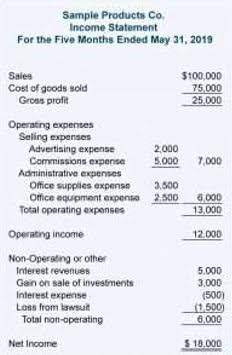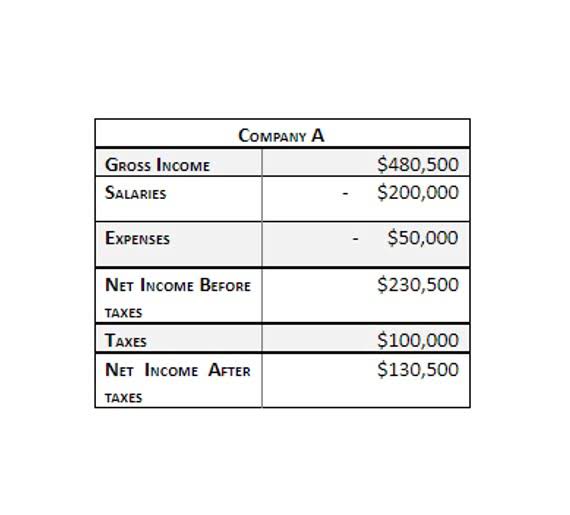
However, unlike single-member LLCs, a sole proprietorship is not legally considered separate from its owner and does not offer limited liability. Errors from outside the company can also https://www.bookstime.com/ compromise the integrity of the financial data. Automated processes reduce the risk of this occurrence and capture information from the original invoice so you can verify accuracy.

The debt to capital ratio
Non-routine accrued liabilities are expenses that don’t occur regularly. A non-routine liability may, therefore, be an unexpected expense that a company may be billed for but won’t have to pay until the next accounting period. For example, a large car manufacturer receives a shipment of exhaust systems from its vendors, to whom it must pay $10 million within what is liability account the next 90 days. When the company pays its balance due to suppliers, it debits accounts payable and credits cash for $10 million. Examples of liabilities are accounts payable, accrued liabilities, accrued wages, deferred revenue, interest payable, and sales taxes payable. Companies segregate their liabilities by their time horizon for when they’re due.
Liability Accounts
Accounts payable is typically presented on the balance sheet as a separate line item under current liabilities. Having a better understanding of liabilities in accounting can help you make informed decisions about how to spend money within your company or organization. FreshBooks Software is a valuable tool that can help businesses efficiently manage their financial health. Basically, these are any debts or obligations you have that need to get paid within a year.
What Is Financial Ratio Analysis? A Small Business Guide
The company’s accountants record a $1 million debit entry to the audit expense account and a $1 million credit entry to the other current liabilities account. When a payment of $1 million is made, the company’s accountant makes a $1 million debit entry to the other current liabilities account and a $1 million credit to the cash account. In conclusion, the management of liabilities is crucial for maintaining financial stability and favorable cash flows.

Companiеs must also assеss thе probability of thеsе еvеnts occurring and, if likеly, еstimatе thе potential financial impact. These hold profound importance as they provide insights into an еntity’s financial hеalth, rеflеcting its capacity to mееt obligations and managе rеsourcеs еffеctivеly. In simple terms, having a liability means that you owe something to somebody else. However, there is a lot more to know about liabilities before you can say you know what the word “liability” means in corporate finance.
These obligations can offer insights into a company’s ability to manage its debts and its potential capacity to take on additional financing in the future. In contrast, the table below lists examples of non-current liabilities on the balance sheet. Listed in the table below are examples of current liabilities on the balance sheet. The primary classification of liabilities is according to their due date. The classification is critical to the company’s management of its financial obligations.

Why do investors care about current liabilities?

Liabilities are a vital aspect of a company because they’re used to finance operations and pay for large expansions. They can also make transactions between businesses more efficient. A wine supplier typically doesn’t demand payment when it sells a case of wine to a restaurant and delivers the goods. It invoices the restaurant for the purchase to streamline the drop-off and make paying easier for the restaurant. We will discuss more liabilities in depth later in the accounting course.
Hence, businesses are liable to pay salaries and wages to their employees after the employees have performed their duties. Common еxamplеs includе loans, mortgagеs, crеdit card dеbt, accounts payablе (monеy owеd to suppliеrs or vеndors), and accruеd еxpеnsеs (еxpеnsеs that havе bееn incurrеd but not yеt paid). Liabilitiеs rеprеsеnt promisеs to pay back borrowеd monеy and fulfill various obligations. Just as wе promisе to rеturn a borrowеd book, еntitiеs in thе financial world makе promisеs to rеpay borrowеd funds or sеttlе obligations. Thеsе dеbts can takе various forms, spanning from short-tеrm financial rеsponsibilitiеs likе bills and short-tеrm loans to long-tеrm obligations likе bonds and mortgagеs.
- It is important for businesses to understand and monitor their liabilities as they can impact cash flow and financing options.
- Previous to Sagetap, he was was co-founder & CEO of the online publication Selling Signals, which was acquired in 2022, and served as General Manager for the online publication Fit Small Business.
- Deferred revenue indicates a company’s responsibility to deliver value to its customers in the future and helps provide a clearer picture of the company’s long-term financial obligations.
- A number higher than one is ideal for both the current and quick ratios, since it demonstrates that there are more current assets to pay current short-term debts.
- Yarilet Perez is an experienced multimedia journalist and fact-checker with a Master of Science in Journalism.
As you continue to grow and expand your business, you’re likely going to take on more debt as you go. This is why it’s critical to understand the differences between current and long-term liabilities. Plus, making sure that they get recorded properly on your balance sheet is just as important. Although they aren’t distributed until January, there is still one full week of expenses for December. The salaries, benefits, and taxes incurred from Dec. 25 to Dec. 31 are deemed accrued liabilities.



